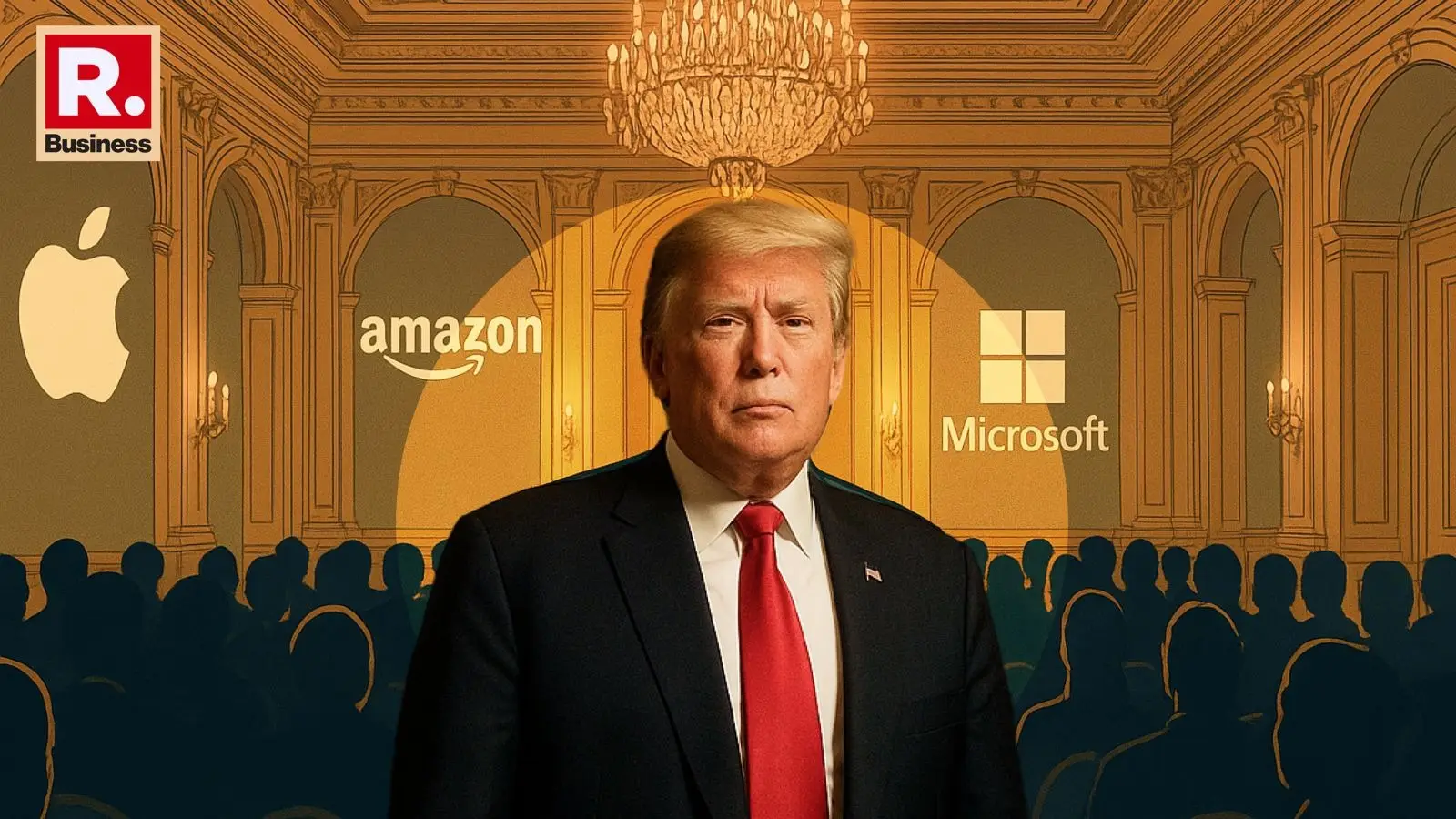Copyright republicworld

The Trump administration has released the full list of corporations, wealthy individuals, and foundations contributing to the construction of a $300 million ballroom at the White House, a project that’s already generating controversy for its scale and donor profile.According to official documents seen by BBC and CBS News, the ornate 90,000 sq ft (8,360 sq m) ballroom will be funded largely by corporate donations and private contributions, with President Donald Trump himself claiming he will personally cover a “significant portion” of the costs.The construction, which began this week, has already transformed parts of the East Wing, with excavators and crews breaking ground on what the administration says will be the “most opulent and technologically advanced” event space in the White House’s history.The Big Donors: Silicon Valley, Wall Street, and Big IndustryThe donor list reads like a who’s who of American business.Tech giants Amazon, Google, Meta, Apple, Microsoft, and YouTube are among the top names. Other contributors include defense contractor Lockheed Martin, crypto exchange Coinbase, analytics firm Palantir, and energy giant NextEra Energy Inc.Traditional corporate powerhouses such as Caterpillar, Comcast, HP Inc, and Union Pacific Railroad are also on the list, alongside private donors and billionaire families.The list also includes:Altria Group IncAppleBooz Allen Hamilton IncCaterpillar IncComcast CorporationJ. Pepe and Emilia FanjulHard Rock InternationalHP IncMicron TechnologyNextEra Energy IncRippleReynolds AmericanT-MobileTether AmericaUnion Pacific RailroadAdelson Family FoundationStefan E BrodieBetty Wold Johnson FoundationCharles and Marissa CascarillaHarold HammBenjamin Leon JrThe Lutnick FamilyThe Laura & Isaac Perlmutter FoundationStephen A. SchwarzmannKonstantin SokolovKelly Loeffler and Jeff SprecherPaolo TiramaniCameron WinklevossTyler WinklevossDocuments reviewed by CBS show that donations will be handled by the Trust for the National Mall, a nonprofit organization that collaborates with the National Park Service on White House and Mall projects.$22 Million from YouTube as Part of SettlementOne of the most striking entries on the donor list is YouTube, which court documents reveal will pay $22 million towards the project. The payment stems from a settlement between the company and President Trump over his 2021 account suspension following the January 6 Capitol riot.The YouTube payment adds a legal dimension to the funding, though the company has not publicly commented on whether the contribution was voluntary or court-mandated.Recognition for Donations: Names Etched in Stone?A pledge form obtained by CBS News suggests that donors could receive “recognition” for their contributions—possibly in the form of names etched into the structure or plaques commemorating large benefactors.While the White House says the design plans are still being finalized, the potential for public acknowledgment of private donors has already triggered debate about the intersection of money and political access.President Trump reportedly told attendees at an October 15 donor dinner that “many had been really, really generous,” and joked when asked if a $25 million donation was sufficient, responding:“I said: I will take it.”Ethics Concerns: “An Ethics Nightmare”Ethics experts have been quick to criticize the funding model.Richard Painter, former chief ethics lawyer in the George W. Bush administration, called it “an ethics nightmare.”“It’s using access to the White House to raise money. I don’t like it,” Painter told the BBC. “These corporations all want something from the government.”Painter warned that the practice could amount to paying for access, a modern “pay-to-play” scheme reminiscent of past political controversies.In the 1990s, President Bill Clinton faced scrutiny for allegedly offering overnight stays in the Lincoln Bedroom in exchange for campaign donations. More recently, Trump’s team sought corporate sponsors for the White House Easter Egg Roll, prompting similar questions about influence.“You can’t prove a quid pro quo,” Painter said. “But I think the Trump administration is pushing the envelope here.”White House Defends Project: “No Cost to Taxpayers”The White House has firmly rejected claims of impropriety, emphasizing that the ballroom project will not cost U.S. taxpayers a cent. Officials argue that the new facility is a necessary addition to the executive mansion, which currently lacks sufficient space to host large-scale state dinners and ceremonial events.“The renovation will benefit future administrations as well,” a White House spokesperson said.Martin Mongiello, a former White House executive chef and Camp David general manager who served under seven presidents, defended the move as financially practical.“The tents they use outside for events often cost over a million dollars each,” Mongiello told the BBC. “This ballroom will eventually pay for itself and save costs.”Expanding Capacity — and Potential InfluenceOriginally designed to hold 650 guests, Trump announced this week that the ballroom’s capacity will now be expanded to 999 people.While the president framed the expansion as “making room for the people,” critics say it could also open the door for larger fundraising events or donor receptions.Painter noted that the current limited capacity of White House venues acts as a natural check on potential abuse.“The limited space means not everyone gets a White House invitation,” he said. “In my view, that’s a good thing. The current size limits the ‘pay-to-play’ game.”A Symbol of Power, Wealth — and ControversyAs construction continues on the $300 million ballroom, the debate surrounding its financing underscores the fine line between private generosity and political influence.The donor list, featuring some of the world’s most powerful tech and industrial giants, reflects how corporate America continues to engage directly with the Trump administration.Whether the new ballroom becomes a symbol of transparency or transactional politics may depend less on who builds it and more on how it’s ultimately used.(With Inputs From BBC)Read More - LIC Defends All Investments, Calls The Washington Post Claims 'Baseless



